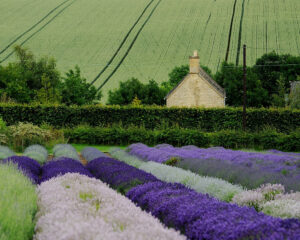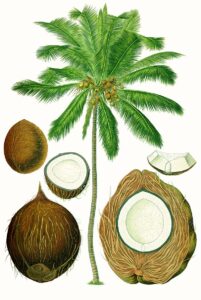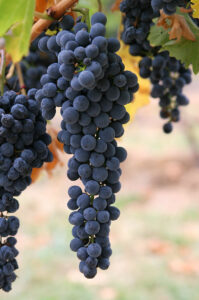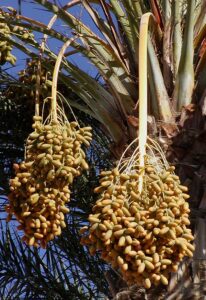Polycarpic plants are those that produce flowers and seeds multiple times in their lifetime before death.
Most polycarpic plants are perennials which means that they can live for two years or more. They usually take longer to mature but continue to flower for all their lifetime.
Polycarpic plant examples include:
- Mango plant
- Orchids
- Hibiscus
- Grapevine
- Orange tree
- Cashew tree
- Jackfruit tree
- Litchi tree
- Coconut
- Guava tree
- Date palm
- Rose plant
- Cherry blossoms
- Wood Apple tree
- Blueberry bush
- Avocado tree
- Lavender
- Banana plant
- Papaya tree
- Apples
Next, we will discuss all the above examples in detail:
Polycarpic plant examples:
Blueberry bush
Blueberries are prostrate shrubs that can grow from 10 centimetres up to 4 meters. Blueberries are perennial plants that produce blue or purple berries. After maturation, a blueberry bush produces fruits every year from May to August. A typical highbush blueberry plant can live up to 50 years and starts producing fruits at around 2 to 3 years of age.

Image: Wikipedia
Lavender
Lavender is a popular polycarpic plant example that is native to the Mediterranean region, Africa and from southwest Asia to India. They typically have a lifespan of 5 to 15 years depending on the species, but since they take just a few months to mature, they can flower multiple times during their lifetime.

Image: Wikipedia
Litchi tree
Grown all over southeast Asia Litchi is an important polycarpic plant example. A typical litchi tree reached maturity at around three to five years of age after which it produces its flower clusters and delectable fruits. The tree is perennial but fruits only during the summer seasons and remains green all year round.
Wood apple tree
The wood apple tree is of great significance in the Hindu religion be it for its leave or fruits. Cultivated in extensive parts of India, Sri Lanka, Bangladesh and Southeast Asia for its hardiness. Seedlings produce fruits only at around 8 years and a single tree can have produced over 250-300 fruits by the time it reaches the age of 12.
Coconut palm
The coconut palm is the symbol of the tropical beaches and is a perennial polycarpic palm that can live up to 60-80 years. Called the “three-generation” tree as it can provide a harvest for 3 generations of its farmer coconut palms are native to most tropical and subtropical regions of the globe. Both the ripe fruit and the unripe fruit are harvested.

Image: Wikipedia
Orange tree
This citrus evergreen is an essential polycarpic plant example to be mentioned. A single orange tree can grow for up to a century and if cared for can bear fruits for over 50-60 years after reaching maturity. While Brazil is the peak producer of oranges worldwide the count from the United States, India and China is also not very minimal.
Orchids
A large genus of flowering plant orchid species can live for up to 20 years. Varieties like the phalaenopsis can start producing flower spikes at around a year or two of age. Most orchids flower in the spring to summertime and can produce more than a single flower spike in the same season.
Cashew
Another common polycarpic plant example cashew is native to Brazil but is now cultivated in most tropical areas across the globe. The cashew nut that we consume is only a part of the cashew fruit that the tree bears. Cashew trees nearly grow like weeds, not requiring a lot of care and can start fruiting at just 3 years of growth even from seeds. A cashew tree can easily live up to 25years and fruit during the winter every year after maturation.
Grapevine
A grape is technically a berry and the grapevine is another polycarpic plant example. Grapevines are perennial bushes that are actually better thought of as creepers or climbers. After maturity, every vine undergoes 2 phases- the growth phase during the spring and summer and the dormant phase during the fall and winter months(only in colder climates).

During the dormant phase, the vine loses its leaves and as spring ushers in the leaves grow back and the vine starts flowering. The vine fruits during late spring to early summer ripen as the weather warms up.
Guava tree
Guava or Psidium sp is another decent polycarpic plant example with a lifespan of over 30 to 40 years. Widely cultivated for their fruits in the tropical and subtropical regions of the world the fruits are harvested every summer every year after the plant reached maturity. This occurs at around eight years but it will bear fruits and flowers every summer for the rest of its lifespan.
Papaya tree
Native to central America but grown in all tropical and subtropical areas across the globe is another great polycarpic plant example. Both the raw and ripe fruit of the papaya tree is consumed and are considered great for those with digestive issues. Papayas can start bearing fruit all year round just six to ten months after planting and can easily live for 5 years or longer under proper care.
Banana tree
Though the banana plant grows thick and tall it is technically classified as a herb due to the absence of a trunk. A banana plant can become mature in less than a year and flowers and fruits nearly all around the year in the tropics and subtropics. It lives for around 5 to 6 years to be replaced by shoots that grow from the roots of the mother plant. In many cuisines, the leaf, fruit( both raw and ripe) and even the stem are consumed.
Cherry blossoms
Known for their beautiful flowers cherry blossoms are considered the epitome of spring beauty. Cherry blossoms can grow for 30 to 40 years and start flowering at only 2 years of age. They flower every spring and keep the blossoms till the start of summer. Black cherry blossoms can live for up to 250 years. The pink, white and red blossoms are native to western and northern Asia.
Date palm
Native to the Canary Islands, northern Africa, the Middle East, Pakistan, India, Mexico, and the state of California date palms are also a polycarpic plant example. Harvested for both their fruit and sap date palms can actually live for as long as 150 years.

They usually start bearing fruits at around 4-5 years and at 10-15 years can produce a massive 80-90 kilograms of dates annually each. They usually fruit during a season in most regions.
Jackfruit
Jackfruits take around three to four years after plantation to bear fruits worth harvesting. But summers are known for raw and ripened jackfruits. Jackfruits are grown in most tropical and nearby regions and can live to be massive in its 100 year-long lifespans.
Hibiscus
Hibiscus or china rose or more the more elaborate “Rose of Sharon” is the most popular and well known polycarpic plant example. Native to all the global tropical, subtropical and warm temperate regions hibiscus is grown for its flowers that are often used in religious rituals in Hinduism. A cutting can root and start producing flowers in a few months flowering years round. A hibiscus tree can grow up to be 10 feet tall and live to be over 50 years.
Avocado
Avocados rich in fatty acids and vitamins are an exemplary polycarpic plant example. This perennial tree has a shocking lifespan of 200-400 years and starts bearing fruit at around 5 years of age. Unlike a lot of fruits avocados only start to ripen when plucked from the plant so they have an extraordinary shelf life.
Rose
Called the queen of flowers and the symbol of love rose shrubs are a great polycarpic plant example. A single rose plant can live for up to 15 years. It starts flowering around 2 years as a cutting and can flower all year round or in the colder months depending on the place. Roses are mainly grown for their beautiful flowers that are sold commercially and also used for rose oil extraction.
Mango
Called the “King of fruits”- Mangifera indica is probably the most famous among the polycarpic plant examples. Indigenous to Eastern Asia, India and Myanmar the mango is probably the most anticipated delicacy of the subtropical summers. Mango seedlings can only bear fruit after it has reached the six-year age mark. Living for over 50 years the tree produce sit fruits every summer starting from March end that end up ripe and juicy by May.
Apples
As the saying goes “An apple a day keeps the doctor away” the apple is the most common polycarpic plant example mentioned in the list. With over 8000 varieties grown worldwide apples are one of the most diversely cultivated crops. Varieties like Pink Lady can reach maturity at a mere 15-20 feet and start bearing fruits around November to December each year for over 20 years easily.
Also Read:
- Ear anatomy
- Do plants cells have vacuoles
- Zygote 2
- Smooth endoplasmic reticulum function 2
- Do chloroplasts have enzymes
- Eukaryotic cells vs bacterial cells
- Decomposer bacteria examples
- Parasitic plant example
- Is enzyme inhibited
- Annual plant example

I am Trisha Dey, a postgraduate in Bioinformatics. I pursued my graduate degree in Biochemistry. I love reading .I also have a passion for learning new languages.
Let’s connect through linked in: